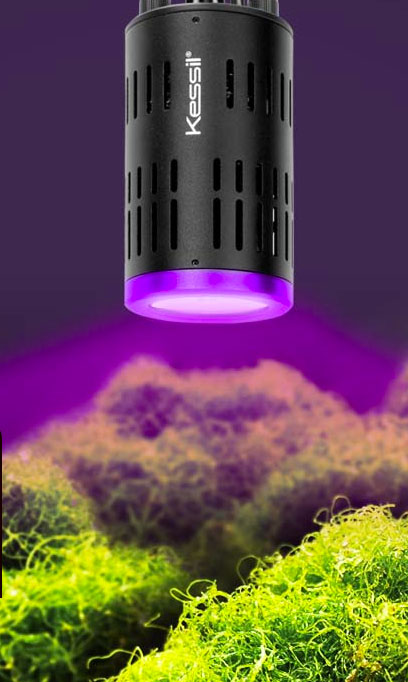Aquarium Refugium Overview

Refugiums have been a popular addition to reef aquariums for many years. There are many ways that a refugium can benefit your aquarium and multiple ways to add a refugium to your aquarium.
A refugium is just what it sounds like, a refuge. The purpose of a refugium is to create a secure place for beneficial animals that can survive in your main aquarium. Depending on what life you add to a refugium, there are several benefits that can come from your refugium.
Nutrient Removal
The most common reason for adding a refugium is as a form of filtration. Adding live rock and live sand to a refugium can serve as a bacterial filter for the aquarium. But the most efficient way to use a refugium as a filter is through algal-based filtration. Algae added to a refugium removes waste such as nitrate and phosphate by using these compounds as fertilizer. Sometimes, algae can not survive in the main display because fish will eat it. However, it can survive in a refugium. The two most popular kinds of algae for refugiums are chaetomorpha and caulerpa.
Aquarists using caulerpa will benefit from using a nutrient-enriched substrate such as
Ecosystem Aquarium Miracle Mud, or
CaribSea Refugium Mineral Mud. These substrates provide nutrients to the algae to allow it to grow faster and remove more unwanted waste.
Aquarists using chaetomorpha will be better off using a liquid supplement such as
Brightwell Aquatics ChaetoGro.
It's also important that a refugium be lit so that the algae can photosynthesize properly. A bright light designed for algae growth such as the
Kessil H160,
Kessil H80 Tuna Flora LED Refugium Light, or
Tunze Eco Chic Refugium Light will maximize the efficiency of your refugium's algae filtration. Be sure to use a refugium light that is at least as bright as your main aquarium light to ensure the algae stays in the refugium.
Plankton Generation
Many animals including corals, sponges and some fish benefit from live plankton as a food source. These animals will eat plankton in the main display aquarium, but the plankton can proliferate in the safety of a refugium. Some of this plankton then makes its way back into the main display tank where your animals can feed on them. To generate plankton in your refugium you will need to have an area for the animals to proliferate. This can be live rock, mud, live sand, or a dense growth of algae.
Increased Stability
Refugiums help to keep your aquarium more stable in several ways. They add water volume to the system to dilute waste. They can also stabilize the pH of the aquarium. PH stabilization happens when the algae in the refugium absorbs CO2. CO2 is an acid that lowers the aquarium's pH. When the algae absorbs CO2 through photosynthesis it has the effect of raising the pH.
Most aquarists opt to light their refugium on a reverse daylight schedule. With a reverse schedule, the lights on the refugium are on whenever the lights on the main display are off. This is because the corals in the main display remove CO2 during the day through photosynthesis but then stop at night. This usually results in the pH dropping at night. When a refugium is lit at night it can stop the accumulation of CO2 and facilitate proper pH.
Types of Refugiums
There are four different kinds of refugiums: in-tank, hang-on, all-in-one built-in-back, and in-sump. In-tank refugiums such as the Fiji Cube Refugiums are placed inside an aquarium or sump. They are the most cost-effective but also the most unattractive. Some all-in-one aquariums, such as the Coralife BioCube, have a section of the back filtration compartment that can be used as a refugium. For larger aquariums, and for setups that completely hide the refugium, the IceCap XL Reef Sumps, FijiCube Advanced Reef Sumps (Size 20 & Larger), and CPR Aquatic Reef Sump are the best choices.




























 Refugiums have been a popular addition to reef aquariums for many years. There are many ways that a refugium can benefit your aquarium and multiple ways to add a refugium to your aquarium.
Refugiums have been a popular addition to reef aquariums for many years. There are many ways that a refugium can benefit your aquarium and multiple ways to add a refugium to your aquarium.